Related Research Articles
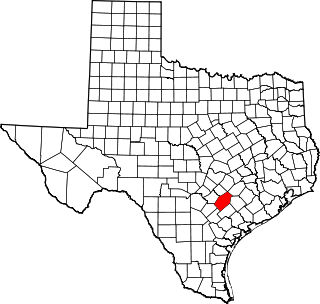
Gonzales County is a county in the U.S. state of Texas, adjacent to Greater Austin-San Antonio. As of the 2020 census, its population was 19,653. The county is named for its county seat, the city of Gonzales. The county was created in 1836 and organized the following year. As of August 2020, under strict budgetary limitations, the County of Gonzales government-body is unique in that it claims to have no commercial paper, regarding it as "the absence of any county debt."

Comanche is a city located in Comanche County in the U.S. state of Texas. The population was 4,335 at the 2010 census. It is the county seat of Comanche County.

Gonzales is a city in the U.S. state of Texas, with a population of 7,165 at the 2020 census. It is the county seat of Gonzales County. The "Come and Take It" incident, the ride of the Immortal 32 into the Alamo, and the Runaway Scrape after the fall of the Alamo, all integral events in the War for Texas Independence from Mexico, originated in Gonzales.
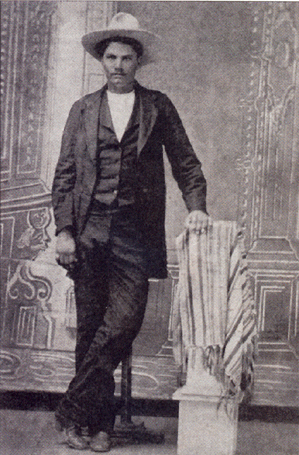
John Wesley Hardin was an American Old West outlaw, gunfighter, and controversial folk icon. Hardin often got into trouble with the law from an early age. He killed his first man at the age of 15, claiming he did so in self-defense.
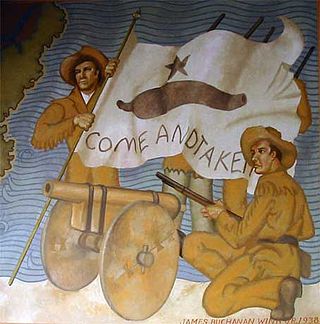
The Battle of Gonzales was the first military engagement of the Texas Revolution. It was fought near Gonzales, Texas, on October 2, 1835, between rebellious Texian settlers and a detachment of Mexican army soldiers.
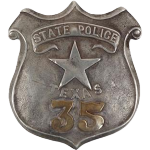
The Texas State Police (TSP) was created following the Civil War by order of Texas Governor Edmund J. Davis. The TSP worked primarily against racially based crimes in Texas, and included black police officers. It was replaced by a renewed Texas Rangers force in 1873.
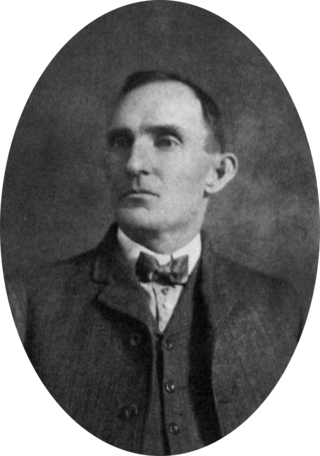
James Brown Miller, also known as "Killin' Jim", "Killer Miller" and "Deacon Jim", was an American outlaw and title-holder gunfighter of the American Old West, said to have killed 12 people during gunfights. Miller was referred to by some by the alias "Deacon Jim" because he regularly attended the Methodist Church, and he did not smoke or drink. He was lynched in Ada, Oklahoma, in 1909 along with three other men, by a mob of residents angry that he had assassinated a former deputy U.S. marshal.

John Henry Selman was sometimes identified as an outlaw and sometimes a working lawman of the Old West. He is best known as the man who shot John Wesley Hardin in the Acme Saloon in El Paso, Texas, on August 19, 1895.
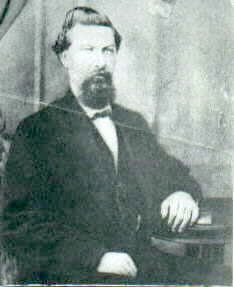
Philio Houston "Phil" Coe, was a soldier, Old West gambler, and businessman from Texas. He became the business partner of gunfighter Ben Thompson in Abilene, Kansas, with whom opened the Bull's Head Saloon. He was killed by marshal Wild Bill Hickok in a street brawl.
Cistern is an unincorporated community in southwestern Fayette County, Texas, United States. It is located on Texas State Highway 95, 12 miles (19 km) northwest of Flatonia. It was formerly known as Whiteside's Prairie and Cockrill's Hill.
John Riley Duncan was a Texas lawman with service as a Dallas police officer, Texas Ranger, and detective. He is most well known for his significant contributions to the capture of John Wesley Hardin.

Pilgrim, Texas is located in Gonzales County, Texas and has an approximate population of sixty. Pilgrim is situated on land granted to Thomas J. Pilgrim by Stephen F. Austin. Pilgrim, TX is located near a salt flat, and was a notable hideout for John Wesley Hardin in the 1870s. A map shows Pilgrim is located on Farm to Market Road 1116.
Arthur Swift (1812–1855) was a 19th-century Texas merchant, surveyor, political and military figure. He along with Rangers Mathew Caldwell and James Campbell were founders of Seguin, Texas and a member of Callahan's Gonzales-Seguin Rangers and a participant in the Texas–Indian wars. He served as a Texas State Representative for Gonzales-Guadalupe County.

Feuds in the United States deals with the phenomena of historic blood feuding in the United States. These feuds have been numerous and some became quite vicious. Often, a conflict which may have started out as a rivalry between two individuals or families became further escalated into a clan-wide feud or a range war, involving dozens—or even hundreds—of participants. Below are listed some of the most notable blood feuds in United States history, most of which occurred in the Old West.

The Sutton–Taylor feud began as a county law enforcement issue between relatives of a Texas state law agent, Creed Taylor, and a local law enforcement officer, William Sutton, in DeWitt County, Texas. The feud cost at least 35 lives and eventually included the outlaw John Wesley Hardin as one of its participants. It began in March 1868, not reaching its conclusion until the Texas Rangers put a stop to the fighting in December 1876.
The Texas Special Police were formed, along with the Texas State Police, during the Reconstruction Era administration of Texas. to combat crime statewide in Texas.
John Jackson Helm, was a lawman, cowboy, gunfighter, and inventor in the American Old West. He fought for the Confederacy during the Civil War, but worked as a lawman for the Union during Reconstruction. He was an active participant in the Sutton–Taylor feud in and about Dewitt County, Texas; and was killed in an ambush related to the feud and perpetrated by Jim Taylor and John Wesley Hardin.
Pisgah is a ghost town that was located in Navarro County, Texas, United States, approximately 12 miles south of Corsicana.
Cheapside is a ghost town in Gonzales County, Texas. It is located 21 mi (34 km) south of Gonzales.

Union is a populated place and CDP in Wilson County, Texas, United States. The area is named for the local ghost town that was originally named "Union Valley." Today, the extant community of Union is located on FM Road 1681, about 56 miles southeast of San Antonio. The cemetery—still visible—used by the town's early inhabitants, contains the grave of Jane Bowen, the wife of outlaw John Wesley Hardin.
References
- 1 2 3 Albuquerque, TX; article; "Texas Escapes Online Magazine: Travel and History"; accessed September 2015
- 1 2 3 4 5 6 Albuquerque, TX; article; uploaded on June 9, 2010; Dunn, Roy Sylvan; "Handbook of Texas Online; published by the Texas State Historical Association; accessed September 29, 2015
- ↑ Hardin, John Wesley (1896). The Life of John Wesley Hardin: As Written By Himself. Seguin, Texas: Smith & Moore. ISBN 978-0-8061-1051-6 . Retrieved September 29, 2015.
- ↑ Helm, Jack; article; Handbook of Texas online; published by the Texas State Historical Association; accessed September 2015.
- ↑ Hardin's Deadly Tools; March 12, 2012; article; by Spangenberger, Phil; "True West Magazine" (online); accessed September 2015
- ↑ Wise, Ken (September 2015). Hunter, Michelle (ed.). "The Trial of John Wesley Hardin". Texas Bar Journal. Austin, TX: State Bar of Texas. 75 (9): 202. Retrieved February 7, 2017.
- ↑ Rose, Victor (1880). The Texas Vendetta, or, the Sutton-Taylor Feud . Retrieved February 7, 2017.
doughboy.
{{cite book}}:|work=ignored (help)
